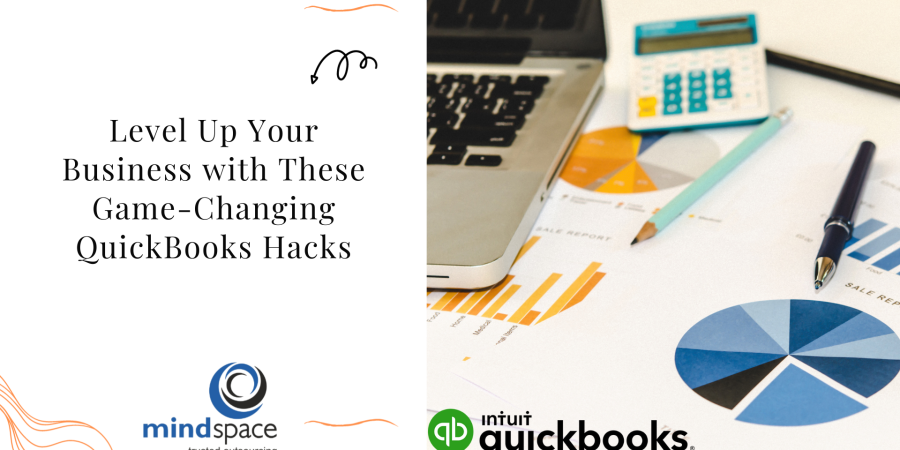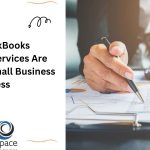Level Up Your Business with These Game-Changing QuickBooks Hacks
Level Up Your Business with These Game-Changing QuickBooks Hacks.
QuickBooks has been at the forefront as a helpful tool for managing finance for start-ups to large-scale companies. That is why it can be considered one of the most suitable and demanded accounting software for modern business. That being said, it is unlike many programs where to reap the maximum benefits you need to know about the options they provide, and this is where QuickBooks fails. When you use two of these hidden gems of QuickBooks, I have shared the above tricks of QuickBooks so you can increase your productivity, reduce errors, and gain better control of your business financials.
In this guide, you are going to learn about some of the most amazing QuickBooks tips that will revolutionize your business.
- Recurring transactions
The third feature that most users of QuickBooks fail to explore is repeating transactions. This hack can save so many hours if your business performs routine billing, payments, or journal entries.
How It Works: They are used whereby you can prepare templates for transactions that occur regularly like rent, subscription charges, or payrolls. By scheduling transactions when they are entered into QuickBooks, QuickBooks will post these transactions on the specified date, nothing is missed, and it decreases the chance for errors. • Select the particular transaction to be reconciled, for example, invoices, bills, etc. • Complete any of the fields that may be necessary. • Go to the bottom of the window and click on “Make Recurring.” • Set the frequency of the intent messages should they ever need to be changed. • Enter the start date and end date of the intent messages. businesses managing their financials, from small startups to established enterprises. Its versatility and user-friendly interface make it one of the go-to accounting software options for businesses worldwide. However, like any tool, getting the most out of QuickBooks requires a deeper dive into its features, many of which go unnoticed by users who stick to the basics. By unlocking these lesser-known QuickBooks hacks, you can boost efficiency, accuracy, and insight into your business’s financial health.
In this guide, we’ll walk through some of the game-changing QuickBooks hacks that can elevate your financial management and streamline processes.
- Automate recurring transactions
One of the most overlooked but powerful features of QuickBooks is its ability to automate recurring transactions. This hack can save countless hours if your business deals with repetitive billing, payments, or journal entries.
How It Works: You can set up templates for transactions that occur regularly, such as rent, subscription fees, or payroll. Once scheduled, QuickBooks will automatically record these transactions on the dates you specify, ensuring that nothing is missed and reducing the likelihood of manual errors.
Steps to Implement:
- Go to the transaction screen (Invoices, Bills, etc.).
- Fill out the required information.
- Select “Make Recurring” at the bottom of the screen.
- Set the frequency, start date, and end date.
This QuickBooks hack helps cut time in half and ensures timely payments as well as income recognition.
- Custom reports allow for a high level of analysis.
The software offers its users a range of integrated standard reports, though in this class you can design your unique reports. Quicken’s Custom Report feature applies to whether you want a highly specific sales breakdown for each product sold, a look at which of your customers are most profitable, or a projection of your company’s cash flows for the next several weeks, months, or days.
How It Works: The use of advanced reporting in QuickBooks allows the users to sort or show only what is most appropriate in the business they are handling. There are some fields to which you can point out and choose which KPIs or metrics you will see, such as revenues by product type and expenses by department.• Select a basic layout report right-click and select “modify.”• Choose the fields that you want to appear in a specific filter. • Export the report to reuse the setting at any time or set up a regular automated emailed update that’s most relevant to your business. You can focus on specific metrics or KPIs, like revenue by product line or expense categories by department, giving you granular control over the information you view.
Steps to Implement:
- Go to the “Reports” menu.
- Choose a standard report and click “Customize.”
- Select the specific fields and filters you want to include.
- Save the customized report for future use or schedule it to be emailed to you regularly.
Custom reports can also show trends and future concerns that should be addressed and, therefore, are one of the most important tips for using QuickBooks as a businessperson.
- Take advantage of class and location tracking.
If you have a multisite, multi-department, or multi-segment company, QuickBooks’ class and location tracking tools are a godsend. Such aspects enable one to classify their transactions according to set categories, thus enabling everyone to analyze a certain part of their business without necessarily enclosing the entire firm’s transactional data.
How It Works: These include class tracking, which enables you to allocate each leading business item, such as an invoice or an expense, to a particular business unit, department, or project, and location tracking, which is useful if your company operates in different facilities. • Class tracking turned on in “Account and settings.” • When creating transactions, select the class or location from the drop-down list. • Provide performance demonstrations based on classes or locations to supply reports. Sort and display information that’s most relevant to your business. You can focus on specific metrics or KPIs, like revenue by product line or expense categories by department, giving you granular control over the information you view.
Steps to Implement:
- Go to the “Reports” menu.
- Choose a standard report and click “Customize.”
- Select the specific fields and filters you want to include.
- Save the customized report for future use or schedule it to be emailed to you regularly.
Custom reports can reveal trends, highlight problem areas, and help with future planning, making this one of the most essential QuickBooks hacks for business owners who want to make data-driven decisions.
- Leverage Class and Location Tracking
For businesses that operate in multiple departments, locations, or business segments, QuickBooks’ class and location tracking features are indispensable. These features allow you to segment your transactions based on predefined categories, making it easier to analyze different parts of your business independently.
How It Works: Class tracking lets you assign each transaction (like an invoice or an expense) to a specific business unit, department, or project, while location tracking is ideal for businesses with multiple physical locations.
Steps to Implement:
- Enable class tracking in “Account and Settings.”
- When creating transactions, choose the class or location from the dropdown menu.
- Generate reports based on classes or locations to analyze performance.
This feature will be very helpful to companies that have many revenue sources or subdivisions, which should be reported and analyzed separately to identify the level of profitability in each part.
- Master QuickBooks Shortcuts
As we know, time is money, and why spend extra time doing something when QuickBooks has some cool tricks up its sleeve? These shortcuts assist in getting through the QuickBooks software faster, besides enhancing the time needed to input data in this program.
Some useful shortcuts:
- Ctrl + I: Create an invoice
- Ctrl + W: Write a check.
- Ctrl + F: Find a transaction
- Ctrl + M: Memorize a transaction
- Ctrl + Q: Analysis of the selected transaction with relevant research in a brief period
Such shortcuts may cut down the time you spend working on them, which will help you to spend more time on expanding your business.
- Automate bank feeds
Bank reconciling is a tedious task that is usually done manually; therefore, it is riddled with some errors. Another great QuickBooks trick is to go paperless by setting automated bank feeds from bank accounts and credit cards linked to QuickBooks. It is very helpful for prompting time monitoring of your cash activities and makes reconciliation very easy.
How It Works: That means we have to connect the accounts first to which QuickBooks operates and downloads the bank transactions daily. You can thereafter pair the following records with the transactions that already exist in your posted records or with new records that you have not recorded yet.• You will add your bank or credit card information by inputting your login details. • With QuickBooks, anytime transactions will be downloaded on the company’s account, whether they were entered manually, checked online, or never previously seen by QuickBooks. Your navigation and data entry in QuickBooks boost your productivity with minimal effort.
Some useful shortcuts:
- Ctrl + I: Create an invoice
- Ctrl + W: Write a check.
- Ctrl + F: Find a transaction
- Ctrl + M: Memorize a transaction
- Ctrl + Q: Quick report on the selected transaction
These shortcuts can reduce the time you spend on manual processes, allowing you to focus more on growing your business.
- Automate bank feeds
Manually reconciling bank transactions is a time-consuming task, prone to errors. One of the top QuickBooks hacks is to automate your bank feeds, linking your bank accounts and credit cards directly to QuickBooks. This enables real-time tracking of your financial transactions and makes reconciliation a breeze.
How It Works: Once your accounts are connected, QuickBooks automatically pulls in your bank transactions daily. You can then match these transactions with your existing records or create new entries for unrecorded transactions.
Steps to Implement:
- Go to the “Banking” tab.
- Connect your bank or credit card accounts by entering your credentials.
- QuickBooks will automatically import recent transactions, which you can review, categorize, or match with existing entries.
Hence, the automation of bank feeds reduces the chances of errors while making your accounts always current.
- Utilize the QuickBooks Mobile App
One great feature that every business owner on the go would relish is the QuickBooks mobile app. It is convenient to work with invoices and check expenses and financial reports whenever you need it IF YOU HAVE AN APP.
How It Works: Downloadable for both Android and iOS devices, the QuickBooks Mobile application enables you to create and send invoices, capture receipts, and even log your business miles for tax credits. It also means that you will always have the latest update of your data when working with the app in sync with the desktop version. • You can obtain the application from either the App Store or the Google Play services. • Enter your QuickBooks email address and password to log in. • You synchronize your data, and you are ready to run your business from wherever. app allows you to create and send invoices, capture receipts, and even track miles for tax purposes. Syncing with the desktop version ensures that your data is always up to date.
Steps to Implement:
- Download the app from the App Store or Google Play.
- Sign in with your QuickBooks credentials.
- Sync your data, and you’re ready to manage your business from anywhere.
This feature is specifically useful for small business owners, as they are usually managing too many things and need frequent access to their data.
- Efficient Way of Billing… Batch Invoicing
If you issue several invoices for the same product, service, or customer, QuickBooks’ ability to create batches of invoices will be a big plus. Instead of inputting a single invoice after the other, you can generate several invoices with a click of a button.
How It Works: In batch invoicing, you generate one invoice form for the product or service and then apply it to all the chosen customers. QuickBooks will automatically create the customers’ invoices from the template, reducing the time you would have spent on creating them on your own. • Move to the “Customers” drop-down tab and click on “Create Batch Invoices.” • Select the customers you wish to receive or send the invoices to. • Provide further descriptions of the product or service that has been offered. • As soon as you select all the customers to whom you want to send the invoices, QuickBooks will create the invoices on its own. to create and send invoices, capture receipts, and even track miles for tax purposes. Syncing with the desktop version ensures that your data is always up to date.
Steps to Implement:
- Download the app from the App Store or Google Play.
- Sign in with your QuickBooks credentials.
- Sync your data, and you’re ready to manage your business from anywhere.
This feature is particularly useful for small business owners who juggle multiple responsibilities and need access to their finances at all times.
- Batch Invoicing for Efficiency
If you frequently invoice multiple customers for the same product or service, QuickBooks’ batch invoicing feature will save you significant time. Instead of creating individual invoices one by one, you can send multiple invoices with just a few clicks.
How It Works: With batch invoicing, you create one template for the product or service and then apply it to all selected customers. QuickBooks will generate individual invoices for each customer based on the template, saving you from the hassle of creating them manually.
Steps to Implement:
- Go to the “Customers” tab and select “Create Batch Invoices.”
- Choose the customers you want to send the invoices to.
- Fill in the necessary details for the product or service.
- QuickBooks will automatically generate the invoices for all the selected customers.
Batch invoicing benefits most companies with several clients since they save a lot of time preparing invoices and thus get paid quickly.
- Always Configure Invoicing Alerts
Pursuing payments is one of the most aggravating aspects of owning a business that many could easily do without. QuickBooks offers the functionality of automatically reminding customers when the invoice is due so that the next follow-up can be on time.
How It Works: Customer management: QuickBooks will send emailed statements of account and follow up on them when due. They are flexible, and you can set up and change their content and timing to match any professional and stress-free reminder that is needed. • Open the Invoice tab and choose “Manage Invoice Alerts.” • Select the intervals of the reminders (for example, it may be set to remind after seven days of the expiry date). • Make changes to the actual content of the email. automatically send email reminders to customers with overdue invoices, prompting them to pay. You can customize the content and timing of these reminders, making the process professional and hassle-free.
Steps to Implement:
- Go to “Invoices” and select “Schedule Invoice Reminders.”
- Choose the timing of reminders (e.g., 7 days after the due date).
- Customize the email content.
This hack helps enhance the cash position because people who owe money to the bank will receive notices of the money they owe, and they won’t have to tell the bank about it.
- Integrate third-party apps
QuickBooks can connect to several thousands of third-party apps that can have integration with QuickBooks, ranging from CRM solutions to eCommerce platforms and inventory management solutions. When QuickBooks is connected with the other applications you and your business utilize, you can save time and guarantee smooth and effortless data sharing between two or more programs.
How It Works: Head on to the QuickBooks website and check out the QuickBooks App Store for apps that fit your company’s workflow. All these apps integrate with apps such as Shopify for eCommerce and TSheets for tracking employees’ work time, and such integration helps to minimize unnecessary data entry and improve overall organizational productivity. • Go to the QuickBooks App Store. • Select the correct third-party app. • Observe the directions for integrating the identifying variable. send email reminders to customers with overdue invoices, prompting them to pay. You can customize the content and timing of these reminders, making the process professional and hassle-free.
Steps to Implement:
- Go to “Invoices” and select “Schedule Invoice Reminders.”
- Choose the timing of reminders (e.g., 7 days after the due date).
- Customize the email content.
This hack improves cash flow by ensuring that customers are reminded of outstanding payments without requiring manual follow-up.
- Integrate third-party apps
QuickBooks integrates with thousands of third-party applications that can extend its functionality, from CRM software to eCommerce platforms and inventory management systems. By integrating QuickBooks with your business’s other tools, you can streamline workflows and ensure seamless data syncing across all platforms.
How It Works: Explore the QuickBooks App Store to find apps that integrate with your existing systems. Whether connecting with Shopify for eCommerce or using TSheets for employee time tracking, these integrations reduce data duplication and enhance operational efficiency.
Steps to Implement:
- Visit the QuickBooks App Store.
- Choose the relevant third-party app.
- Follow the instructions for integration.
This hack complements QuickBooks and allows you to design a better-integrated business solution.
Conclusion
QuickBooks is an application that allows individuals to manage the financial aspects of their business and nothing more when used in their traditional sense. Here, I list some hacks that will help reduce time spent, decrease the likelihood of mistakes, and get more meaningful details about your finances. Naturally, these QuickBooks tricks can work from automating tedious tasks to changing the reports and making them better to fit the needs of the business or integrating with other apps. While implementing these tips, one can gain the most out of QuickBooks to improve business processes.


